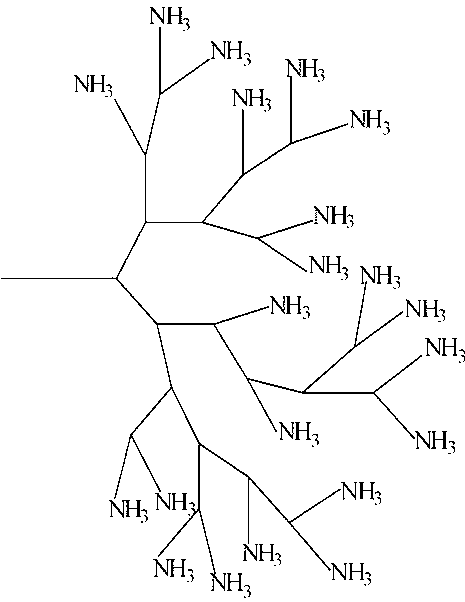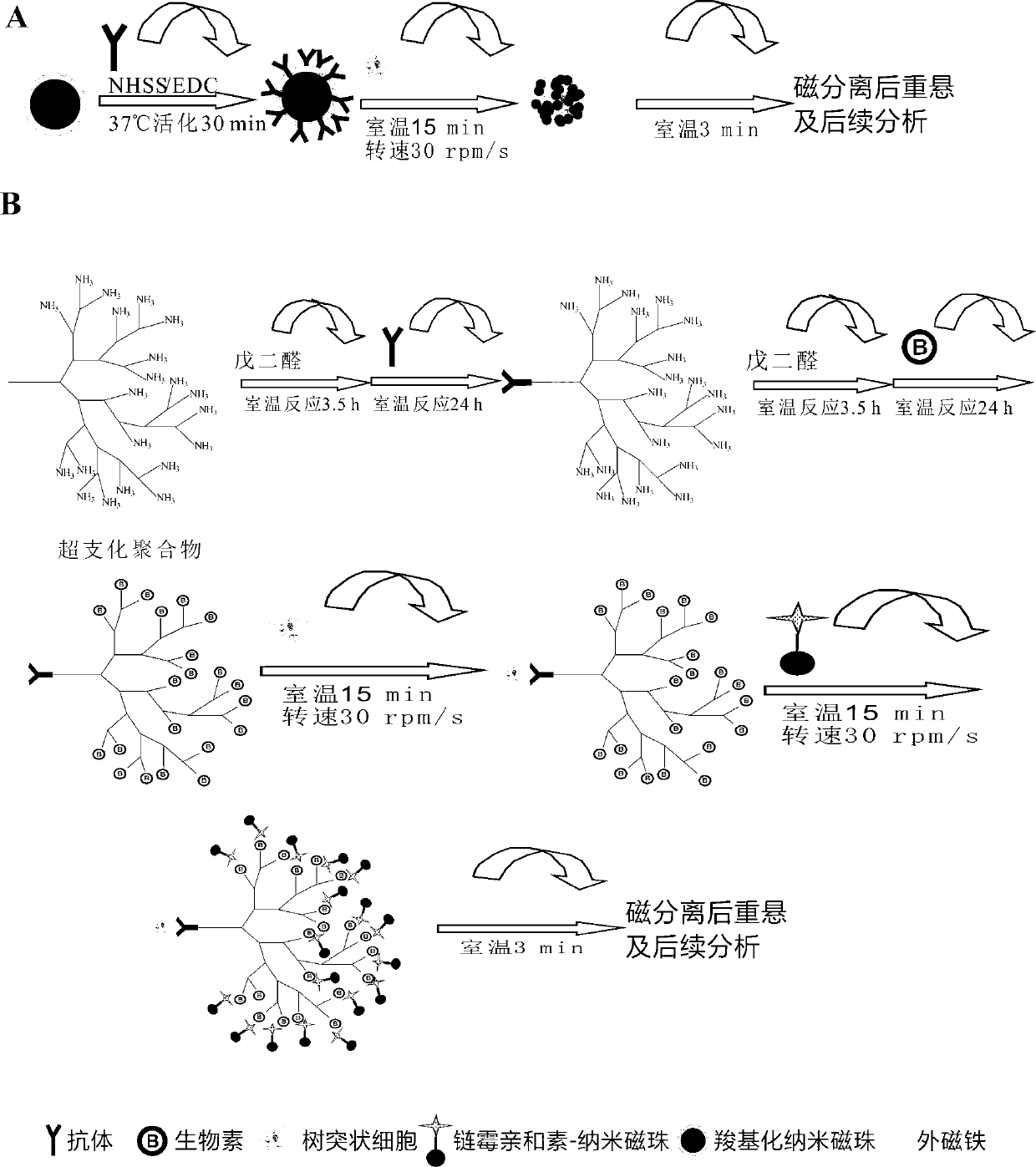Quick separation method of dendritic cells
A technology of dendritic cells and separation method, which is applied in the field of dendritic cell separation based on nano-magnetic beads, can solve the problems of spatial orientation change, cell extrusion, formation of precipitation, etc., to increase the chance of contact and realize cascade The effect of amplification, stabilization of the reaction solution
- Summary
- Abstract
- Description
- Claims
- Application Information
AI Technical Summary
Problems solved by technology
Method used
Image
Examples
Embodiment 1
[0029] 1. The hyperbranched polymer-antibody complex is prepared according to the following steps:
[0030] (1) Weigh 1.0 mg hyperbranched polyamidoamine aminated by hyperbranched polymer, suspend in 4 mL phosphate buffer (PBS, 0.01 mol / L, pH 8.0), stir and add 25% glutaraldehyde dropwise 545 μL of aqueous solution to make the final concentration of glutaraldehyde 3%. React at room temperature for 3.5 h at a rotating speed of 150 r / min on a shaker;
[0031] (2) Add 1 mL (18.75 mg) of mouse anti-human dendritic cell monoclonal antibody dropwise to the above solution so that the final concentration reaches about 3 mg / mL. React at room temperature for 24 h at the speed of the shaker at 150 r / min;
[0032] (3) The above solution was spin-dried under reduced pressure, dissolved in deionized water, and dialyzed in PBS and deionized water for 1 day; after the dialysis, the obtained solution was freeze-dried.
[0033] 2. The long-chain biotin-hyperbranched polymer-antibody...
Embodiment 2
[0039] Example 2 Enrichment effect experiment
[0040] (1) Take 1 mL of concentration as 10 4 Cells / mL DC cells were placed in a 1.5 mL sterile centrifuge tube, centrifuged at 12,000 rpm for 5 min, discarded the supernatant, and resuspended with an equal volume of sterile PBS solution.
[0041] (2) Enrichment and capture: Set up the technical scheme group of the present invention (hyperbranched polymer group co-modified with DC cell antibody and long-chain biotin), nano magnetic beads group modified with DC cell-specific antibody, and DC cell-specific antibody group Modified micron magnetic bead sets enrich target cells.
[0042] (3) After magnetic separation, pour the supernatant into a sterile centrifuge tube, and wash the isolated immunomagnetic beads with DC cells twice with PBST, mix well, and resuspend the immunomagnetic beads with 1 mL of sterile PBS solution. Magnetic bead complex.
[0043] (4) Capture rate calculation: after serial dilution of the enriched target ...
Embodiment 3
[0056] Example 3 Enrichment capture experiment
[0057] Conventional magnetic stand separation time is 30min, and all the other are with embodiment 2.
[0058] The catch rate of each group is as follows:
[0059] Capture rate of DC cell-specific antibody modified micron magnetic bead set Capture rate of DC cell-specific antibody-modified nanomagnetic bead set Capture efficiency of DC cell antibody and long-chain biotin co-modified hyperbranched polymer group 54.6% 40.1% 91.8%
[0060] The experimental results show that compared with the separation of 3 minutes in Example 2, when the separation time reaches 30 minutes, the capture efficiency of the three groups has been improved, especially the capture efficiency of the DC cell-specific antibody-modified nano-magnetic bead group is the most obvious, which shows that It shows that the capture efficiency of the nano-magnetic bead group can be greatly improved by extending the time, but it is still lower t...
PUM
| Property | Measurement | Unit |
|---|---|---|
| particle diameter | aaaaa | aaaaa |
Abstract
Description
Claims
Application Information
 Login to View More
Login to View More - R&D
- Intellectual Property
- Life Sciences
- Materials
- Tech Scout
- Unparalleled Data Quality
- Higher Quality Content
- 60% Fewer Hallucinations
Browse by: Latest US Patents, China's latest patents, Technical Efficacy Thesaurus, Application Domain, Technology Topic, Popular Technical Reports.
© 2025 PatSnap. All rights reserved.Legal|Privacy policy|Modern Slavery Act Transparency Statement|Sitemap|About US| Contact US: help@patsnap.com


